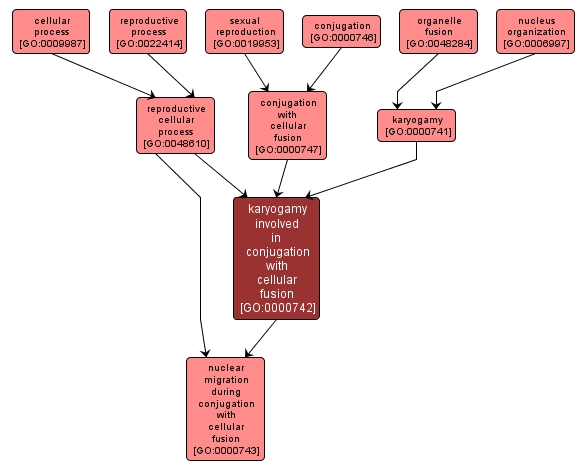GO TERM SUMMARY
|
| Name: |
karyogamy involved in conjugation with cellular fusion |
| Acc: |
GO:0000742 |
| Aspect: |
Biological Process |
| Desc: |
During sexual reproduction, the creation of a single nucleus from multiple nuclei as a result of fusing the lipid bilayers that surround each nuclei. This occurs after cytogamy. |
Synonyms:
- karyogamy during conjugation with cellular fusion
|
|

|
INTERACTIVE GO GRAPH
|














